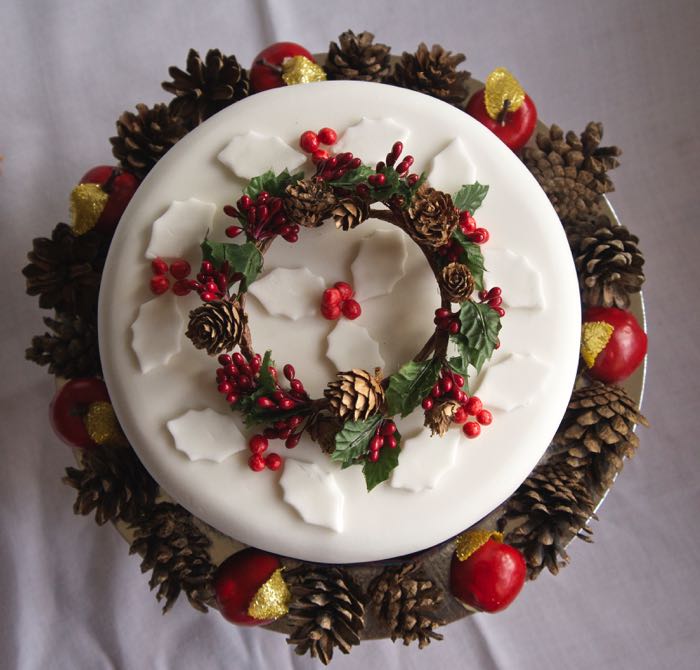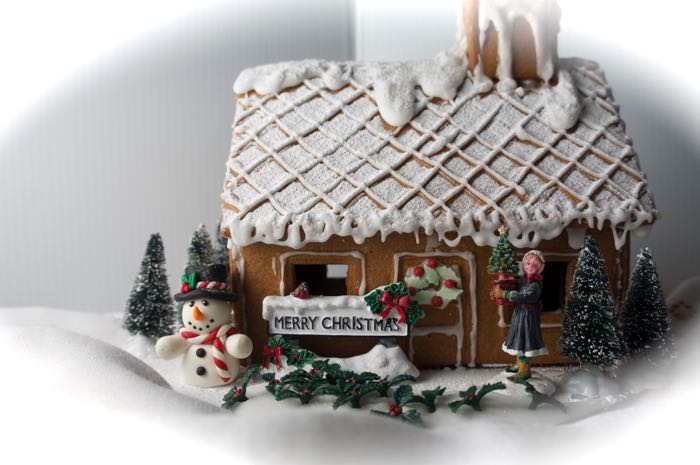Not so much of a blog, more of a photographic record of how to marzipan and ice a cake.
To cover an 8″ cake I used just over 500gm of Waitrose white marzipan, I prefer it to the bright yellow variety. It’s a bit of a pain as it comes in 500gm packets but you will need extra to fill in any little holes before covering the cake. This is really worth doing as it gives a nice smooth finish when you come to ice the cake. If the marzipan is lumpy and bumpy, so will the sugarpaste icing, don’t be fooled into thinking the icing will hide all the imperfections.
If the cake has quite a large dome on the top this will need to be cut off so the cake is level. (The blackbirds will be very grateful). Turn the cake over so you are starting with a nice smooth top. Place on a board and start off by filling any little holes in the cake with marzipan and inserting elongated pieces around the bottom so there are no gaping spaces.
Heat a few tablespoons of apricot jam until it is runny, sieve to remove any lumps and then brush over the cake. This will help the marzipan stick. Don’t put too much on, you don’t want it oozing out from under the marzipan.
Form the marzipan into a ball then roll out on a smooth surface dusted with sieved icing sugar. Don’t pass on the sieving as icing sugar lumps are very stubborn and will show up in the finish. (Forgot to say, take off any large rings, all rings if possible, as they cake easily mark the icing).
It helps to use an extra long professional rolling pin but this is not absolutely necessary. A cake smoother though, available from cake decorating shops, is an invaluable tool if you want a cake to look beautifully smooth.
A ruler helps to take the guesswork out of the size of the marzipan or icing. You need a circle equalling the circumference plus two sides. For example my cake was 8″ wide and 3″ tall so I needed a circle 14″ in diameter.
Keep the marzipan or icing in a round shape as you roll, it makes it much easier to cover the cake, and move it from it’s position from time to time to stop it sticking.
Lift the marzipan using the rolling pin and position on the cake.
Smooth the marzipan down the sides of the cake from the top, this will push out any air bubbles. Cut neatly around the bottom with a sharp knife.
Don’t overwork the marzipan too much as it will turn oily, if this happens the icing will not adhere to it.
Smooth over with the cake smoother and leave for a day to harden slightly.
Before icing, smooth a little boiled water over the marzipan with your hands, this will stick the icing to the marzipan but again don’t over do it, the cake just needs to be very slightly sticky, not wet, otherwise it will spoil the icing.
Ice the cake using the same method as the marzipan.
I prefer to use a professional sugarpaste icing like Renshaws rather than supermarket icing as I have found it has a nicer taste, although that is just my personal opinion.
Please don’t get too upset if your cake is not perfect. Even professional cakes have the odd flaw, it is extremely difficult to get a perfect finish. The beauty of a Christmas Cake is you can cover up any mistakes with decorations and as long as the cake tastes good no one is going to notice the odd scratch or dent.
Decorate as you please. I went out and bought decorations this year as I fancied a really kitsch looking cake but my son pinched them all and put them on my gingerbread house. After the initial grumpph I decided that the gingerbread house looked so pretty I couldn’t possible ruin his beautiful creation so I left them all on.
Not wanting to spend any more money on decorations (I really don’t understand why they are so expensive, £4.00 for a little lamp post!) I used just what I had in the house and I was really pleased with the result. It looks lovely and Christmassy and worthy of a prime position on the dresser.
I had a lovely little helper cutting out the holly leaves which made it even more special.
Merry Christmas!














